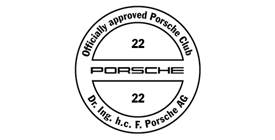The following is copied from [link=http://www.autozine.org/911/911_9.htm]http://www.autozine.org/911/911_9.htm[/link] and might explain things a little more clearly. In contrast to the 964, the 993’s 4-wheel drive system was rather conventional and simple, but it actually performed far superior in real world. Instead of epicyclic differential and mult-plate clutch, it used a simple viscous-coupling LSD as centre differential. To most FF car, viscous-coupling means understeer, but for the rear-wheel-drive-based 911, it means very much loyal to the Carrera 2’s character yet provided superior grip when needed. To make the viscous-coupling always engaged the front wheels, the rear tyres were made marginally smaller in diameter, enhance established a small speed difference between the drive shafts to front and rear. With the speed difference, the viscous liquid normally transferred 5-15% torque to the front axle, which was much less than the 964’s system. In abnormal conditions, that is, whenever one axle lost grip, the viscous-coupling LSD may send up to almost 100% torque to the other axle. Both the center LSD and rear LSD were now pure mechanical, but clever electronics was used in the newly-added ABD (Automatic Brake Differential). Again, ABD was simple yet effective. It was just a program, sharing all the hardware with ABS. Whenever rear wheels spin, it braked the spinning wheel thus the rear differential would send more torque to the other wheel. It was particularly useful for extreme conditions such as on snow, while LSD covered most normal conditions. The 993's system weighed only 50 kg, that’s just half of its predecessor. Energy loss was also halved. It made the 993 Carrera 4 nearly as quick as the RWD version. Production cost was reduced as well. Regards Dave
![. [FONT=verdana,geneva"] [FONT=verdana,geneva"]](/forum/styles/default/pcgb/space.gif) Hi all
Hi all![. [FONT=verdana,geneva"] [FONT=verdana,geneva"]](/forum/styles/default/pcgb/space.gif)











